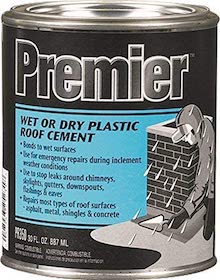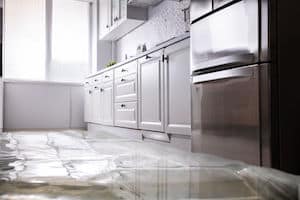Common Water Damage Emergencies
If you own your own either a home or a business, a big detriment to your space is water damage. There are many sources of water damage. Some are immediate and others are long-term and not as noticeable. Those instances of water damage that are not immediately noticeable can be an issue for your business building or home in the long run.
Water can cause thousands of dollars of damage to your home. It can cause wood to rot, sheetrock to mold and stains to form on the carpet. There are a few different ways that water damage can happen. Each one manifests in a different way and time frame. Roof leaks, pipe leaks, and improper draining from sinks and tubs can cause major water damage over a long period of time before they become very apparent to the untrained eye.
Water usually enters your home through a variety of ways. There are four common ways it can get in and cause damage:
- Water can come from a leaking roof
- Water can come from a burst pipe or other plumbing issue
- Water can come from a leaky shower, tub or sink
- Water can come from a flood outside of your house
In this post, we will cover the various sources of water damage, what to look for, as well as how to fix the water damage.
1. Water Damage From Roof Leaks
One of the most common sources of water damage is roof leaks. They can be caused by simple breaks in the roofing material. Something more complex like improper seals on vents or chimneys can also cause a leak. This can create a lot of damage if not taken care of as soon as possible. This is especially true if you’re experiencing a wet spring or summer and will have increased chances of further damage.
In the winter, any snow or ice that accumulates on your roof or around your vents and chimney can melt into otherwise hidden leaks in your roof. This is a common problem. You may find some new leaks after a heavy snow as the sun begins to melt it away.
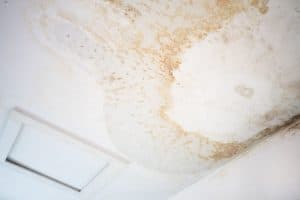
Signs to Look For in Roof Leaks
There are quite a few signs of potential roof leaks. Most of them require you to climb to the roof of your house and inspect your roof in search of these signs. Some of the most common signs include missing, damaged, and buckled shingles as well as damaged flashings around roof vents and chimney.
The most noticeable signs of water damage from roof leaks are found on the inside of the house. Stains on the ceiling, soft wood, mold and mildew, and water on ceilings and walls are all common. Signs inside your home show up much later than the ones on the roof and indicate that a lot of damage has been done in the roof and attic.
The stains and soft spots on the roof are usually indicative of the leak being directly above them. However, in some cases, the water travels down a beam or joist before saturating the ceiling. This changes the spot you see the stain compared to the actual location of the leak.
How Long Roof Leaks Take to Appear
The signs of roof leaks that can be found on the roof show up very early on in the course of a leak causing water damage. In some cases, the shingle issues can be found only a few weeks into the process of water damage from a roof leak. It makes sense since the shingles are the first layer that the water needs to get through to damage your home.
Inside your home, you will find that the signs will take much longer to show. This is because of the many layers of material that the water has to travel through to get into the visible parts of your home. This process can take as little as three weeks to appear if the volume of water leaking in is large enough. In other cases, where the volume of water is much lower, it may take five or more weeks for the signs to manifest.
What to Do to Fix a Roof Leak
Most of the time, if you catch the signs that have to do with the shingles early, the fix is a very quick and simple process. If the leak has been going for a while, the damage goes much deeper. This will require a more complex process to fix and restore your roof and home. In these cases, DIY-ing the repair is almost completely out of the question because of the complexity of the restoration. Placing a tarp on the roof or using some roofing cement can be a quick fix until you can have a professional roofing contractor look at the issue.
Quick Fix Items
Here is more information on roofing cement and how roofing cement works.
Here is more information of repairing a roof leak.
2. Water Damage From Pipe Leaks or Plumbing Emergency
Pipe leaks are a common occurrence in any home. They can be very detrimental if not taken care of quickly. Luckily, most of these types of leaks can be found quickly. They are easily fixed with only a few materials and low-level handyman skills.
Water damage from this type of leak ranges from small, localized stains and soft spots to large areas of soft wood and problems with flooring, tile, and caulking around the leaking pipe. Water damage of this type can be found around toilets, tubs, and sinks, and is caused by the water pipes or the drainage pipes.
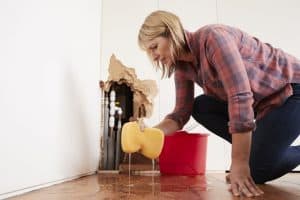
Signs to Look For in Pipe Leaks
Depending on where the pipe leak is coming from, there can be a few different signs of water damage that can indicate where the leak is and how severe it is. The wood in the cabinet under the bathroom or kitchen sink is a usual place to find some water damage if there is a leak in the drainage pipe. If there is any softness, there is a leaky pipe under your sink.
The drain in your tub is a bit of a different story since the drainpipe is not easily exposed. A good place to start is the other side of the wall that the tub is on. This wall and the floor around it may seem soft and damp after a shower. This usually means that the water is draining improperly and seeping into the wood, drywall, and flooring around the tub.
How Long Pipe Leaks Take to Show
Water damage from burst pipes can be spotted almost instantly in most cases. In the instance of a sink drain leaking, you will see the wood softening and discoloring in the cabinet under the bathroom or kitchen countertop after a few hours of dripping. The signs show right away, but unless you look for them regularly, you may not catch it until later on.
You will be able to find a tub drain leak right away in some cases. However, in most cases, it could take months to a year to notice any water damage. The wood and insulation in the wall will soak up most of the water and soften for a while before the drywall and paint begin to show signs of water damage.
In this case, when you find the signs of water damage, act quickly to rectify the damage. The ESR Disaster Hero water damage restoration team is able to quickly and efficiently restore your home after an elusive leak has torn through your bathroom.
What to Do to Fix a Pipe Leak
Pipe leaks from under the sink are fairly easy to repair. The skill required is very low and the price for the repair is under $20. This repair usually just entails replacing the pipe under the sink. In some fringe cases, the pipe is fine and the rubber seals are the only thing that needs to be replaced.
Pipe leaks from the tub drain are much more complicated to repair. Most of the time, they require a professional team to take care of the repair. With all the different types of materials involved, the skill needed to do the repair goes up significantly.
Tools Needed for Plumbing Repairs
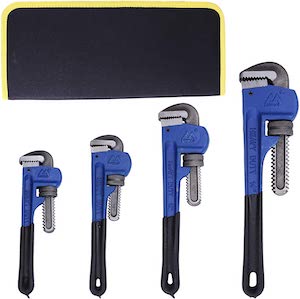
3. Water Damage From Tub Leaks, Shower Leaks, Sink Leaks or Toilet Overflows or Leaks
Tub leaks occur around the edges of the tub, through cracks in the tile, and around the faucet and fixtures. The tub is such a large area that is associated with water that there’s a large potential for leaks. It is wise to regularly inspect the tubs in your home to check for leaks and water damage.
What to Look For in Tub Leaks
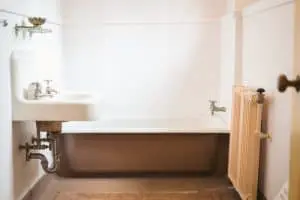 Another big place to find water damage in the bathroom is around the tub and shower. If the water is able to escape the confines of the tub, you will be able to catch it by the signs that follow. The tile can start to release from the floor as the water degrades the adhesive. The walls around the tub may be soft from water leaking through old caulking or cracks in the tile and grout around the shower.
Another big place to find water damage in the bathroom is around the tub and shower. If the water is able to escape the confines of the tub, you will be able to catch it by the signs that follow. The tile can start to release from the floor as the water degrades the adhesive. The walls around the tub may be soft from water leaking through old caulking or cracks in the tile and grout around the shower.
As the house shifts from the foundation moving and the expansion and contraction from the heat and cold respectively, the caulking around the tub, the grout between the tiles, and the seals around the pipes and drains can break loose. This can cause water to slowly drip out. This often results in damage to drywall, insulation, flooring, and foundation if not caught early.
You can learn more about checking for water damage behind shower tiles here.
How Long Do Tub Leaks Take to Show
The time frame associated with the signs of tub leaks is based on the severity and location of the leak. If the leak is fairly severe, you should be able to see the signs in the walls and floor shortly after a shower. As the water continuously leaks, it will show more and more in areas around the tub and in the adjoining room.
The biggest water damage issue that you will find in and around the tub is the slow leak. These types of leaks can do tons more damage over long periods of time. Because the water will dry up quickly, it may be a while before you notice any signs of water damage.
What to Do to Fix a Tub Leak
There are two phases to fixing leaks in your tub. These two phases consist of patching the leak and replacing the damaged materials. The first step is to patch up the leak to minimize any future damages. Then on to the next step, repairing the damage. If the damage is substantial it may be time to call a local bathtub resurfacing company. They can patch the leak and coat the tub with a chemical mixture that can protect the tub for years to come.
If you go the DIY route you will want to stop the leak and minimize further damage based on where the leak is located around your tub and shower. If the leak is around the rim of either the tub or down the side of the tub, a simple caulking job should seal up the edges. If the tile has cracked or the grout has separated, one of the easiest and cheapest temporary fixes is to put duct tape over the crack.
The second step is way more involved and getting help from a professional is recommended for the best results. Depending on how bad the water damage had become before the restoration, the repair might just end up being a full tub/shower remodel. If it’s that bad, you might as well start fresh.
Utilize a Tub Repair Kit to Fix the Leak
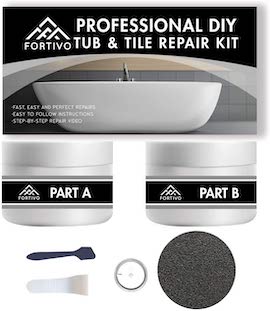
4. Water Damage From A Flood
The fourth, and final, type of water damage that we will discuss in this post is water damage from a flood. Whether localized to your yard, or a geographical area, flooding can create excessive damage to many areas of your home.
Flood damage can affect the external structure of your home such as the siding, foundation, and guttering. However, if the flood is severe, the water damage can permeate into the internal structure of your home. From mold and mildew to extreme structural instability, water damage caused by flooding is a serious matter.
The results of water damage caused by flooding are usually apparent very soon after the flood. Once the water resides, you will begin to see areas where sheetrock has areas of damage. You may notice staining on either your carpet or hardwood flooring.
Other, more longterm, damages may include things such as mold, mildew, rotting structural elements, and instability throughout the home. It is important to contact your insurance agent to assess any water damage caused by flooding in any area of your home.
Addressing Water Damage in a Timely Manner
One of the biggest mistakes that property owners make when they discover water damage is to wait too long to contact a professional. Unfortunately, water damage is one of the greatest culprits requiring intensive home repairs. If left untouched, water damage can quickly wreak havoc throughout your home.
By working with a professional, you can work to eliminate the cause of water damage. Whether from a damaged roof, a leaking pipe, unsealed shower and tub, or even flooding, the cause of water damage should be quickly repaired. Once you have repaired the problem that has caused water damage in the first place, you can safely move on to repair the negative results of the leak.
Related Questions
What are the most common plumbing emergencies? There are many plumbing emergencies experienced by homeowners around the world. A few of the most common emergencies include the following: clogged drains, overflowing toilets, or leaky appliances. Some other, less common, emergencies include sewer problems, broken water heaters, or even broken garbage disposals. You can read even more about common plumbing emergencies here.

